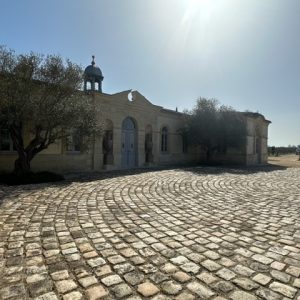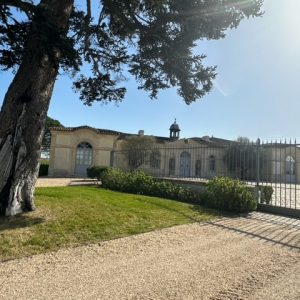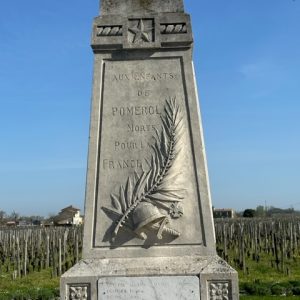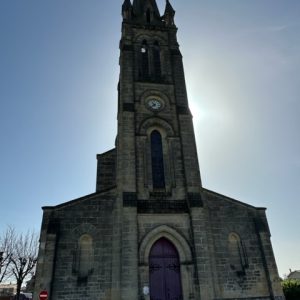Pomerol, Bordeaux
Pomerol is not an ideal area for the intrepid winewalker. The terrain is pretty flat, whereas I like to stretch my limbs on steep coteaux.
But Pomerol is home to many of the world’s great wines like Château Pétrus, Château Le Pin, Château L’Évangile, Château La Fleur-Pétrus, Château Lafleur, Château Latour à Pomerol, Château Trotanoy, Vieux Château Certan. and Chateau Séraphine. As well as restaurants like La table de Catusseau.
In short, Pomerol can’t be ignored. The first two photos are of Chateau Petrus, which has removed the signage from its building to deter (unsuccessfully) visitors like me
Pomerol is the smallest of the major fine wine regions in Bordeaux, covering an area that is roughly three kilometers wide by 4 kilometers long. It is more a community where the vineyards are family-shared. Unlike most other Bordeaux communes, there is no real village of Pomerol, although there is a church. The houses are set among the vineyards.
The mostly small-sized producers in the area produce red wines. As in the neighbouring appellation of Saint-Émilion, the predominant grape variety is Merlot, with Cabernet Franc playing a supporting role.
Unlike other Bordeaux regions, Pomerol has no official wine ranking or classification. However, wines like Château Pétrus and Château Le Pin are priced as high as the classified first growths of the Pauillac and Saint-Émilion such as Château Ausone and Château Cheval Blanc.
Though it is difficult to pinpoint exactly when grapes were first planted in the Pomerol region there is enough evidence to show that viticulture was present in the area during the time of the Romans. Similarly there is uncertainty as to the origins of the name “Pomerol”, although there is some speculation that it stems from the Latin word poma which refers to a fruit bearing seeds and is the origin of the French word pomme, meaning apple.
The exorbitant prices of Pomerols like Château Pétrus mean that they are out of reach for most French people and are mainly snapped up by rich Americans and Asians. But part of the art of French wine culture is knowing wines from regions just bordering the big brands, and which can be just as good and are available at much lower prices. Fronsac, which is just over the hill from Pomerol, is an example of a good value wine appreciated by real connoisseurs.





